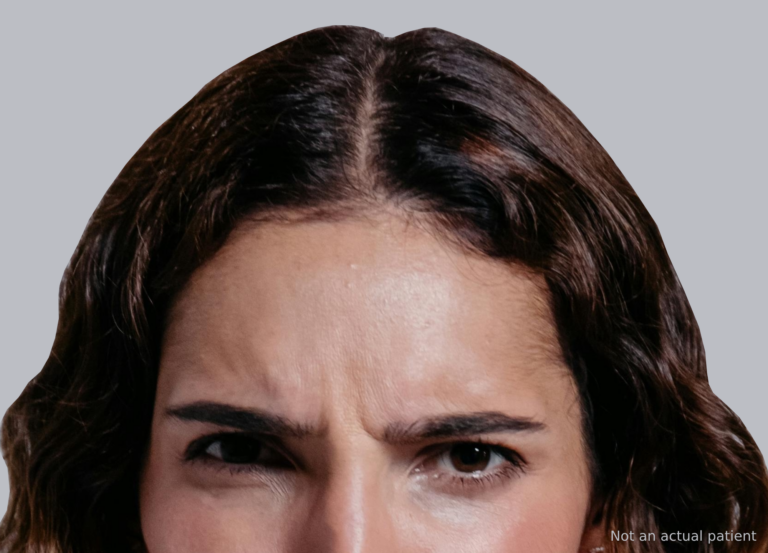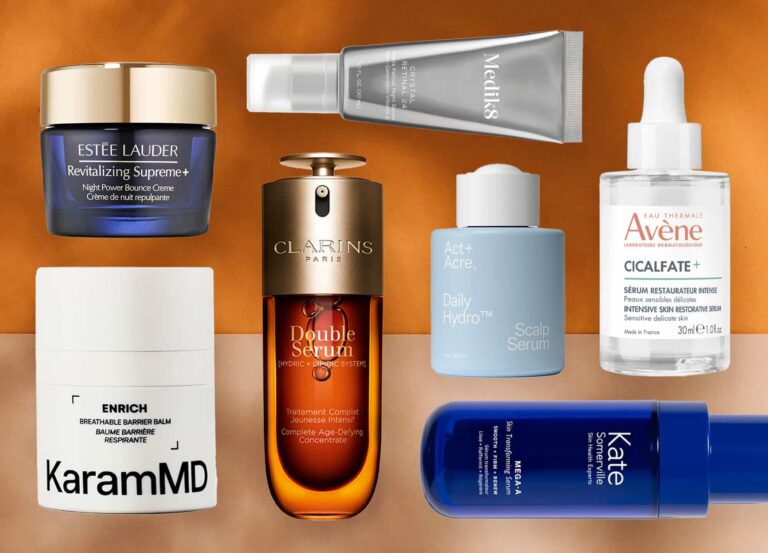In nearly every story written about pandemic plastic surgery, women have been the main characters. But as COVID-19 gradually recedes and masks come off, we’re learning that men have played a supporting role in the Zoom boom. “Work from home has ramped up the number of men seeking cosmetic surgery,” says Dr. Steven Pearlman, a board-certified facial plastic surgeon in New York City. Motivated by tired reflections and unprecedented opportunity, some dipped a toe into noninvasive waters, while others plunged fully into facelifts.
It’s this last part that intrigues us, as surgeons across the country have been buzzing about the recent uptick in men seeking facelift surgery. Compared to women, the biggest purveyors of cosmetic enhancements, the number of guys getting facelifts is still relatively small—they account for 10–15% of total facelift patients in the offices of the surgeons we interviewed—but their influence on the boom has been quiet yet significant. The impressive results coming out of the pandemic have helped normalize all kinds of plastic surgery—including facelifts for men, our experts say. “Men have seen their friends and colleagues do it,” says Dr. David Lieberman, a board-certified facial plastic surgeon in Palo Alto, California. “They’re realizing that when a facelift is done well, you look like a refreshed version of yourself, not like a guy who’s had plastic surgery—I think that really resonates with them.”
Over the past year, he’s noticed men seeking surgical interventions earlier than ever before. “The last four guys we did facelifts on were in their late 40s,” Dr. Lieberman notes. “Working from home changed the ball game.” Traditionally, men would wait for a job transition, retirement, or some other life change before considering surgery, he says, but WFH has “created a window in the middle or at the peak of their careers,” allowing guys to address whatever is bothering them now, without worries of returning to the office or scheduling downtime around business trips.
Staying relevant in the workplace continues to compel men to keep up appearances. “The venerable sage or learned appearance that comes with age is no longer revered in business,” Dr. Pearlman tells us. “A more youthful look can revitalize a competitive edge”—and men are increasingly embracing this truth without fear of stigma.
The male facelift is a uniquely challenging operation, however, demanding not only meticulous surgical skill but next-level ingenuity and customization. Here, four things top plastic surgeons want you to know about the procedure.
1. Men feel bad about their necks too
According to Dr. Jason Roostaeian, a board-certified plastic surgeon in Los Angeles, “men’s skin tends to be a little thicker and more resilient” than women’s—theoretically due to abundant hair follicles and sebaceous glands and perhaps stronger connective tissue as well, he notes. And these characteristics seem to spare them certain signs of aging—lip lines are a rarity in guys, he points out—but their necks and jawlines are similarly vulnerable to time and gravity.
In fact, “the primary reason men come in for facelifts is extra hanging skin under the chin and in the upper neck,” Dr. Pearlman says. “This may be coupled with jowls, but men are often less concerned about jowls than their ‘turkey necks.’”
In Dr. Roostaeian’s experience, “men tend to have a little less jowling and less loose tissue on average,” he says. “I feel like lack of volume is more of an issue for males than real descent in the face—but the neck angle definitely takes a hit.” And since “a strong jawline is considered to be a really masculine feature,” he adds, many have a hard time tolerating changes in this area.
A face and neck lift can relocate fallen tissues to their place of origin and remove whatever excess skin remains, but to bolster results, our surgeons say that they often place custom-designed implants during surgery, to protract the chin, elongate the jawbone, and define the angle of the mandible (at the back of the jaw) and restore those crisp borders.
2. Bearded skin and balding heads require careful incisions
Facelift incisions customarily travel around the ears—discreetly winding in and out of their natural folds and bends—and terminate, typically, in the hair above the nape of the neck. These cuts give surgeons unrestricted access to the sagging structures they need to release and reposition and allow them to gently redrape and tailor the skin before stitching it closed in a tension-free fashion, which is essential to preventing a pulled look and wide or wandering scars. “Tension is the enemy in every facelift—but almost more so in males,” says Dr. Roostaeian. “Those incisions really have to be perfect, since we often don’t have hair to cover them.”
In bald facelift patients, the degree of difficulty is even higher, and surgeons generally abridge ear incisions considerably, sometimes limiting them to the top of the ear, says Dr. Pearlman, to sidestep obvious scarring. “This is not quite as effective as a longer incision, but we can get full access to the SMAS [covering the facial muscles] through this incision and it’s barely detectable.”
Beard patterns and sideburns can also complicate incision design during facelifts. When redraping the skin over rearranged tissues, you don’t want to shift hair follicles to areas where they don’t belong. “In female facelifts, I pretty much always do a post-tragal incision—meaning the incision goes into the ear at the tragus [the tab of cartilage that obscures the ear canal],” says Dr. Roostaeian. “But in men, I often don’t, because if I pull any hairs into the tragus, it’s a dead giveaway [of facelift surgery].” Instead, he’ll usually bury his incision in a deep crease just in front of the tragus, to avoid disrupting someone’s normal beard distribution.
Stubble also comes into play when lifting the skin off the underlying musculature, says Dr. Lieberman: “We really do want to preserve all those hair follicles running through the skin, which often means adjusting the thickness of our flaps during surgery,” he explains.
3. Men are more prone to bleeding after facelift surgery
This too is a consequence of bearded skin, which is not only thicker than female skin, says Dr. Pearlman, but more richly perfused. And with better blood supply comes a greater risk of blood pooling under the skin after surgery—a post-op hiccup known as hematoma. According to a recent study in the Aesthetic Surgery Journal, “male patients experience this complication almost three times more than female patients.” While minor hematomas can be drained with a needle, more severe ones generally require a second surgery.
4. A “facelift” isn’t always a facelift
While facelift semantics are notoriously confounding, our experts say that a full facelift typically addresses the cheeks, jawline, and neck. A lower facelift focuses on the jawline and jowls. And a neck lift tackles fullness and laxity below the jawline.
To avoid creating scars around the ears—which can be tricky for men to camouflage, especially in the immediate aftermath of surgery—plastic surgeons will, whenever possible, aim to devise outside-the-box solutions for guys who come in requesting facelifts. “Oftentimes instead of doing a facelift, I’ll do a neck lift with facial fat grafting for a male,” says Dr. Roostaeian. This strategy rejuvenates deflated faces and streamlines the neck, without leaving scars on the face or distorting beards and hairlines.
The small under-the-chin incision required for a neck lift enables surgeons to root out excess fat from beneath the platysma muscle, tighten or reduce the muscle itself, and pare down oversized glands in order to debulk the neck and dramatically improve its contour. While little to no skin can be removed via a chin incision, Dr. Roostaeian says he’s often surprised by how much male skin contracts, adhering to its new form, following this sort of deep-neck work. Of course, it’s worth noting that every patient differs in this regard.
Ultimately, skin laxity will determine whether a guy needs a true facelift (and requisite ear scars) or can perhaps get away with a neck lift plus some ancillary tweaks. “If someone has a lot of fullness or a classic double chin but they have youthful skin that looks like it’s going to bounce back, then doing an isolated neck surgery without incisions around the ears is a great option,” Dr. Lieberman says. On the other hand, if a wattle or submental fullness is compounded by jowls and loose skin, some type of facelift is likely a better way to go. “The cheek, the jowls, and the neck, where it sags—they’re all connected,” Dr. Lieberman adds. “They tend to age together, and in the end, it tends to look more natural if we rejuvenate them together.”











